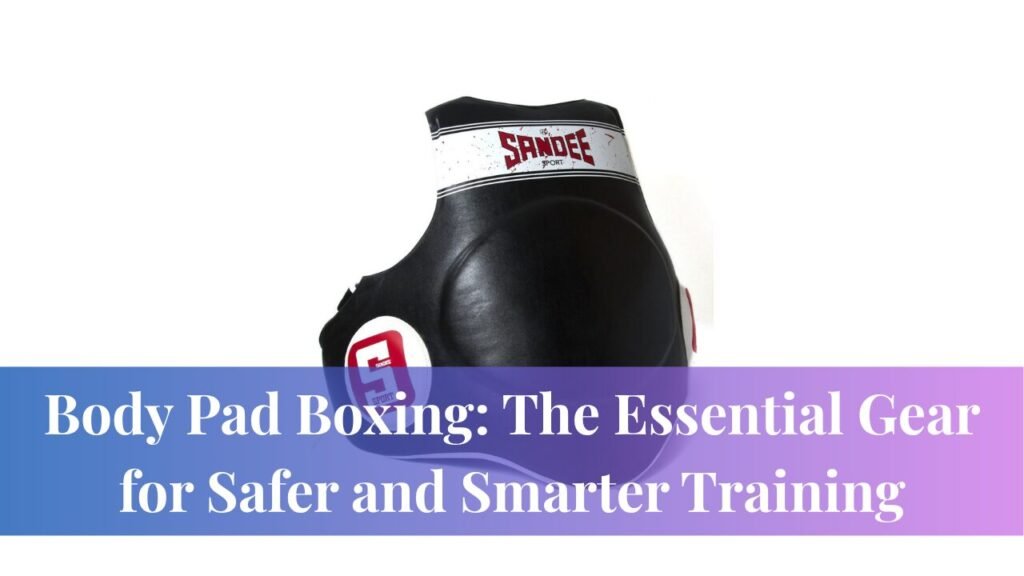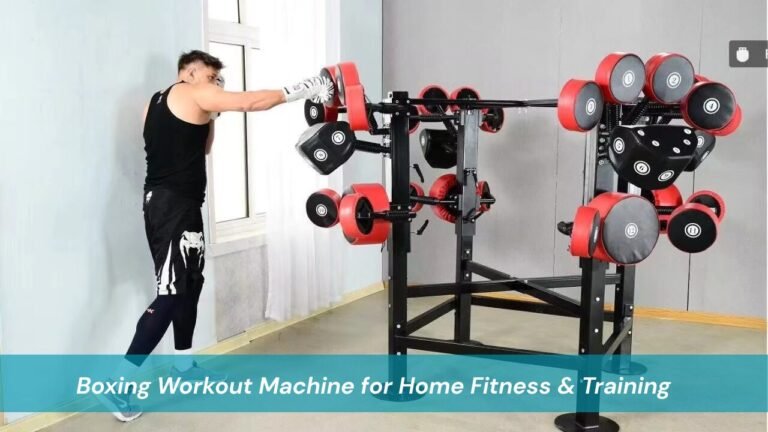Whether you’re a seasoned coach, an aspiring fighter, or a fitness enthusiast exploring the combat sports world, safety and performance go hand in hand. One of the most vital yet often overlooked pieces of equipment in boxing training is the body pad boxing protector. Designed to shield coaches and fighters during intense training sessions, these protectors not only enhance safety but also allow for more realistic, high-intensity drills.
In this comprehensive guide, we’ll explore everything you need to know about body pad boxing gear from its benefits and types to how to choose the right one.
What Is a Body Pad in Boxing?
A body pad boxing protector, also known as a body shield or coach protector, is a padded piece of equipment worn by a trainer or coach to absorb strikes during mitt or pad work. It is designed to simulate live-action punching while keeping the coach safe from injuries, especially to the torso and ribs.
These protectors are built with heavy-duty foam padding, adjustable straps for a secure fit, and ergonomic designs for movement flexibility. They are typically lightweight yet durable, with high-impact resistance, and are suitable for various martial arts beyond just boxing.
Why Body Pads Are Essential in Boxing Training
Trainers often take the brunt of powerful punches during pad work. Without proper protection, repeated blows can cause bruised ribs or more serious injuries. A quality body pad absorbs shock effectively, reducing the risk significantly. This allows coaches to guide boxers more confidently, communicate better, and engage in closer interaction without fear of injury.
Body pads also bring realism to training. Fighters can strike with full force, simulating actual fight conditions and working on timing, power, and accuracy. The ability to practice specific combinations, body shots, and power punches while receiving real-time feedback is invaluable.
Better protection also leads to better coaching efficiency. Coaches no longer have to constantly reposition or flinch away from hits, allowing them to focus fully on technique. The gear encourages reactive drills and pressure training, improving both coach and fighter performance.
Fighters themselves benefit through improved confidence. Knowing they can throw hard shots without risking injury to their trainer creates a fearless environment. Body pads also have versatile applications, being useful in shadowboxing, sparring simulations, and in other combat sports such as Muay Thai, MMA, and kickboxing.
Types of Body Pad Boxing Protectors
Full torso body shields offer extensive coverage, usually protecting the chest, ribs, and stomach. These are best suited for high-intensity sessions and professional training environments where multiple strikes from various angles need to be absorbed.
Belly pads are smaller and wrap around the midsection. They are excellent for practicing body shots and often used alongside focus mitts. Belly pads allow greater upper body mobility for coaches and work well for lighter or technique-driven drills.
Vest-style protectors combine features of both vests and shields. They provide full coverage while remaining lighter and easier to wear. Many models also include shoulder protection and adjustable straps for a more tailored fit, making them suitable for a wide range of body types.
How to Choose the Right Body Pad for Boxing
Your training intensity should guide your choice. For professional or high-impact work, a full torso shield with maximum padding is best. For lighter, technical sessions, a belly pad may be more practical.
Material quality is crucial. High-density foam with durable synthetic leather or vinyl ensures longevity and better impact absorption. Poor-quality materials can wear out quickly, compromising safety.
Adjustability and fit also matter. Straps must secure the pad tightly to prevent shifting during use. A well-fitted pad improves comfort and allows for better mobility.
Mobility should not be sacrificed for protection. Ergonomic designs with contoured shapes and flexible side padding allow natural body movement. Finally, brand reputation and customer reviews offer reliable insight. Established names like TITLE Boxing and RDX Sports consistently deliver dependable products backed by positive user feedback.
Top Brands and Products
Boxing Essential offers the ProCore Coach Body Pad, praised for its ergonomic design, superior padding, and excellent fit. It has an average rating of 4.9 stars from over 200 reviews, though it sits in the premium price range.
TITLE Boxing’s Classic Body Protector is durable, provides great shock absorption, and is easy to wear. It holds a 4.8-star rating from over 300 reviews, though some users find it bulkier than alternatives.
RDX Sports produces the T1 Boxing Body Protector, a lightweight and versatile option that is more affordable. It has a 4.7-star rating from 150+ reviews but offers less coverage compared to higher-end models. Other reputable brands include Venum, Fairtex, and Ringside, each known for quality combat sports equipment.
Maintenance Tips for Longevity
Cleaning is key to extending the life of a body pad. Wiping it down with a disinfectant spray after each session helps maintain hygiene. Using a soft cloth for cleaning protects the surface material, and abrasive chemicals should be avoided to prevent damage.
Proper storage also makes a difference. Keep the pad in a dry, ventilated place to prevent mold and mildew. Avoid prolonged exposure to direct sunlight, which can weaken materials over time.
Regular inspection ensures ongoing safety. Check straps and buckles for signs of wear and replace any damaged parts immediately. The padding should remain firm; if it begins to lose structure, it’s time for a replacement.
Real-World Applications and Testimonials
Many top gyms and athletes use body pads daily. For example, Gleason’s Gym in Brooklyn employs full body protectors during sparring simulations, reducing coach injuries and improving fighter performance.
John Rivera, a boxing coach with over 15 years of experience, noted a significant improvement in his fighters’ body shot accuracy after introducing TITLE’s body protector into regular training. He called it a “game changer” for both safety and skill development.
FAQs
What is the difference between a body pad and a belly pad?
A body pad covers the full torso, providing more protection, while a belly pad only shields the abdominal area. The choice depends on the training intensity and techniques being practiced.
Can beginners use body pads for boxing?
Absolutely. Beginners benefit from the added safety and realism that body pads bring, allowing them to build confidence and technique early on.
How much does a good body pad cost?
Prices range from $40 for basic belly pads to over $150 for high-end full-body shields. Choose based on your training goals and frequency.
Are body pads used in professional boxing training?
Yes. Even elite boxers use body pads during training to simulate real fighting conditions and improve power delivery.
Can body pads be used for other sports?
Yes, they are commonly used in Muay Thai, MMA, and even traditional martial arts to practice body strikes safely.
How often should I replace my body pad?
It depends on the frequency of use and quality of materials. On average, a good-quality body pad can last 1–2 years with regular use. Replace it if you notice padding thinning or straps weakening.
Conclusion
Body pad boxing gear is a cornerstone of safe, effective training. Whether you’re a coach aiming to protect yourself or a fighter wanting realistic drills, investing in the right body protector makes all the difference. Prioritize quality, fit, and functionality you’ll see improvements not just in safety, but also in performance and training efficiency.
When selecting your body pad, remember that comfort and protection go hand in hand. Don’t just settle for the cheapest option invest in gear that will support your training goals and protect you long-term. Brands like Boxing essential and RDX Sports are leading choices due to their proven track records in the boxing community.




